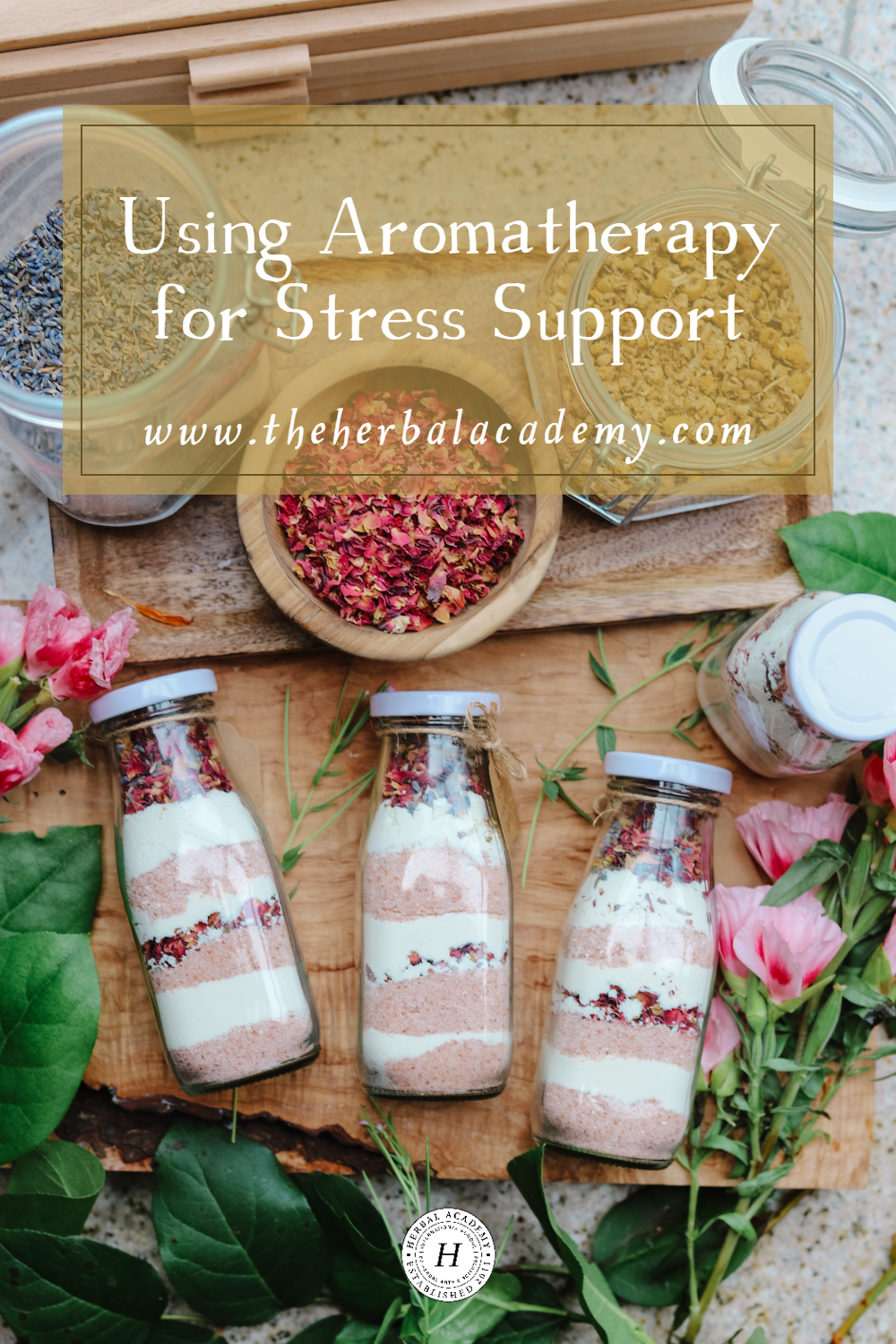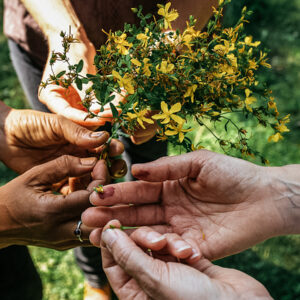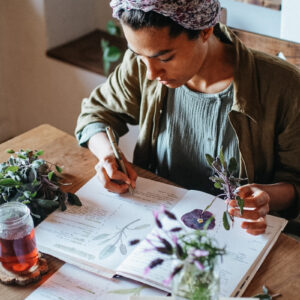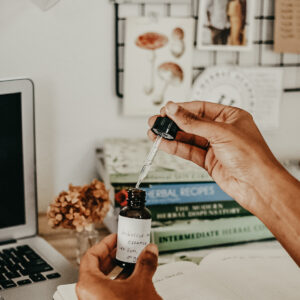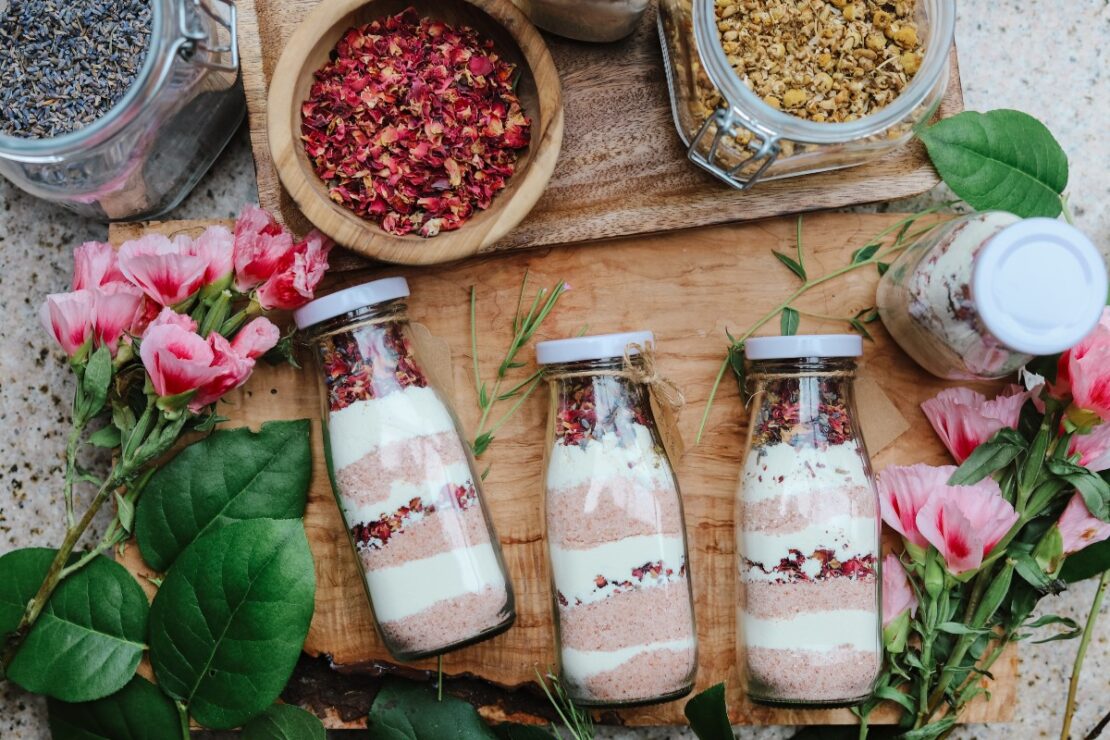
Using Aromatherapy for Stress Support
The following excerpt, Using Aromatherapy for Stress Support, is excerpted from Aroma Alchemy by Holly Brandenberger, published by Watkins Publishing. Copyright © 2025.
Using Aromatherapy for Stress Support and Relief
Aromatherapy is a personal journey, and discovering the right oils for your wellbeing requires experimentation. The process of finding what works best can be both rewarding and enlightening.
Find Your Aroma Preferences
Essential oils offer a beautiful spectrum of scents that can provide stress support and relief, but it’s important to recognize that each person’s response to these aromas is uniquely personal. Our perceptions of scent are influenced by factors such as genetics, past experiences and cultural background, which shape how we interpret and react to different essential oils. For some, the grounding aroma of vetiver may evoke a deep sense of calm, while others might find solace in the uplifting notes of citrus. This diversity in aroma perception highlights the importance of exploring various essential oils to discover what resonates the most with each of us. Essential oils are most helpful for stress when you have a positive emotional reaction to an aroma. There are certain essential oils that are emphasized for emotional and stress support based upon their chemistry, however, any aroma that is considered pleasant to you can be helpful in initiating a relaxation response. Pay attention throughout your day to how aromas affect you – both positively and negatively. Intentionally seek out those that make you feel good. Maybe it is the scent of terpenes being released from conifer trees outside, or fresh-baked cookies, or your favourite shampoo or bubble bath. When struggling emotionally, seek out those aromas, inhale and notice how they change your mood. With regards to aromatherapy, many people are drawn to certain aroma categories. When smelling an essential oil or an essential oil synergy, analyse the aroma and assess what you like and don’t like about it. Is there an aroma category you tend to favour more than the others?
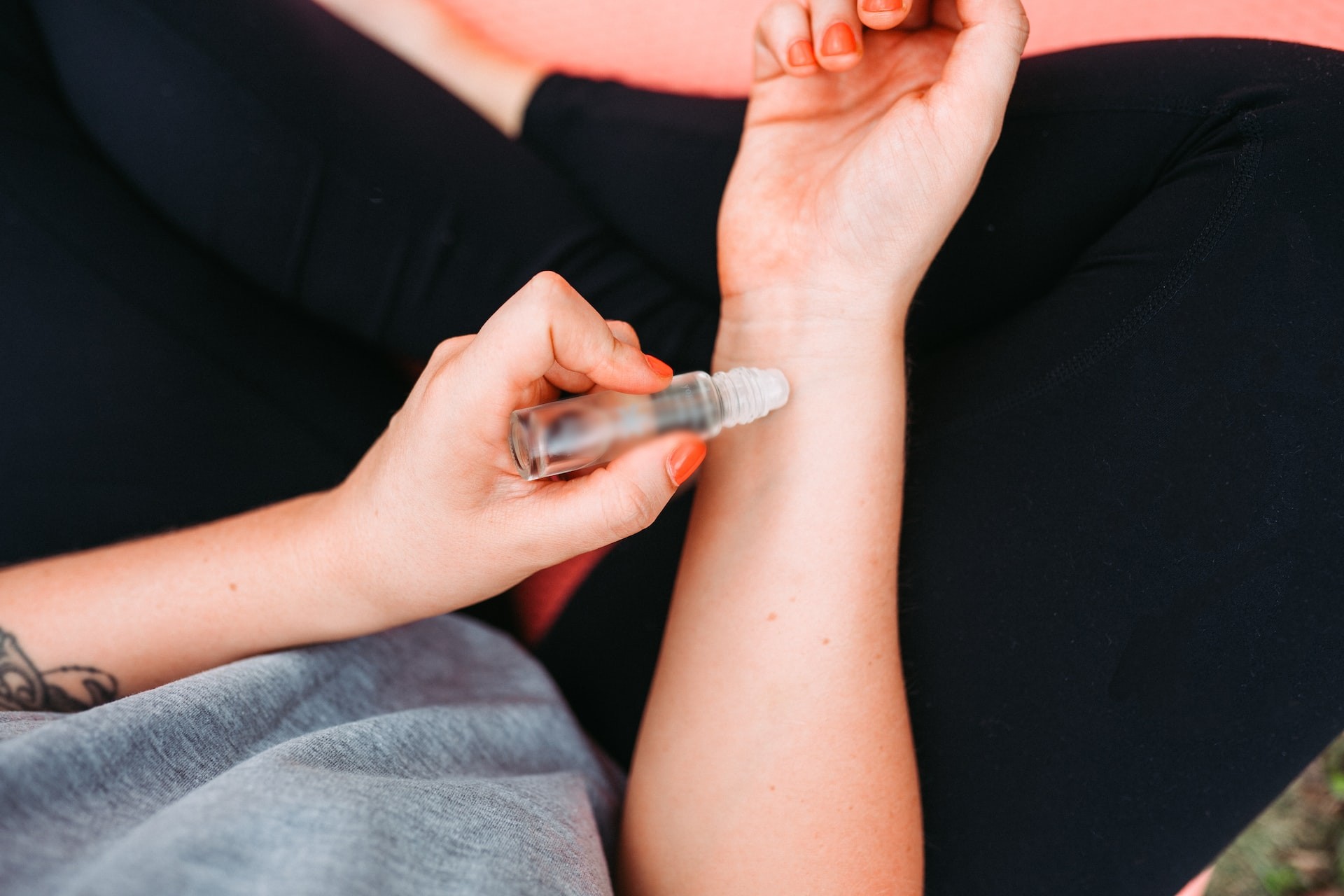
Use Essential Oils in Stress-Relieving Activities
Start using those essential oils you find most pleasant with stress-relieving activities such as a bath, during yoga, meditation, in massage or in a diffuser when unwinding after a long day. As discussed in Chapter 1, your brain will begin to form memory scent associations of those essential oils with relaxation, influencing how you feel later.
Practise Deep Breathing
During periods of stress and other negative emotions, take a moment and reach for those essential oils you gravitate towards and have formed memory scent associations with. Open the bottle and breathe slowly and deeply, inhaling those amazing aromas through your nose, exhaling through your mouth and releasing any tension held within the body. Pay attention to how your mind and body respond shortly after. Studies show that within 250 milliseconds of an aroma hitting the nose, brainwaves coordinate a response. We can instantly recognize an aroma and notice how it impacts how we feel. A stress response can diminish in minutes.
Address the Root of Stress, Not Just the Symptoms
The mind–body connection often leads us to physically store and manifest stress in various ways, such as headaches, tension in the neck and shoulders, back pain, sleep disturbances, skin flare-ups, mental fatigue and changes in bowel habits. When dealing with these physical symptoms, it’s important to address both the symptoms themselves and the underlying stress. For instance, you might use peppermint oil to relieve head tension while also applying or inhaling lavender or another calming essential oil to help reduce stress during challenging times.
Be Consistent
Start developing a healthy coping strategy with essential oils, even when you’re not feeling stressed. Rather than only using them in response to stress, try to incorporate them proactively before facing potential stressors. By practicing aromatherapy regularly, you’ll become more familiar with feelings of calmness and inner peace, making you less likely to feel overwhelmed when stress arises. One of my favourite ways to do this is to check in with myself several times a day using aromatherapy. I will grab my favourite aromatherapy inhaler or an essential oil I think sounds appealing at that time, and slowly breathe it in. As I am breathing it in, I close my eyes and do a mental self-scan slowly from head to toe. I pay attention to areas that I am holding tension and consciously release it upon exhalation. This practice is simple and only takes a minute to do but makes a world of difference to how I feel after, with the benefits often lasting for hours.
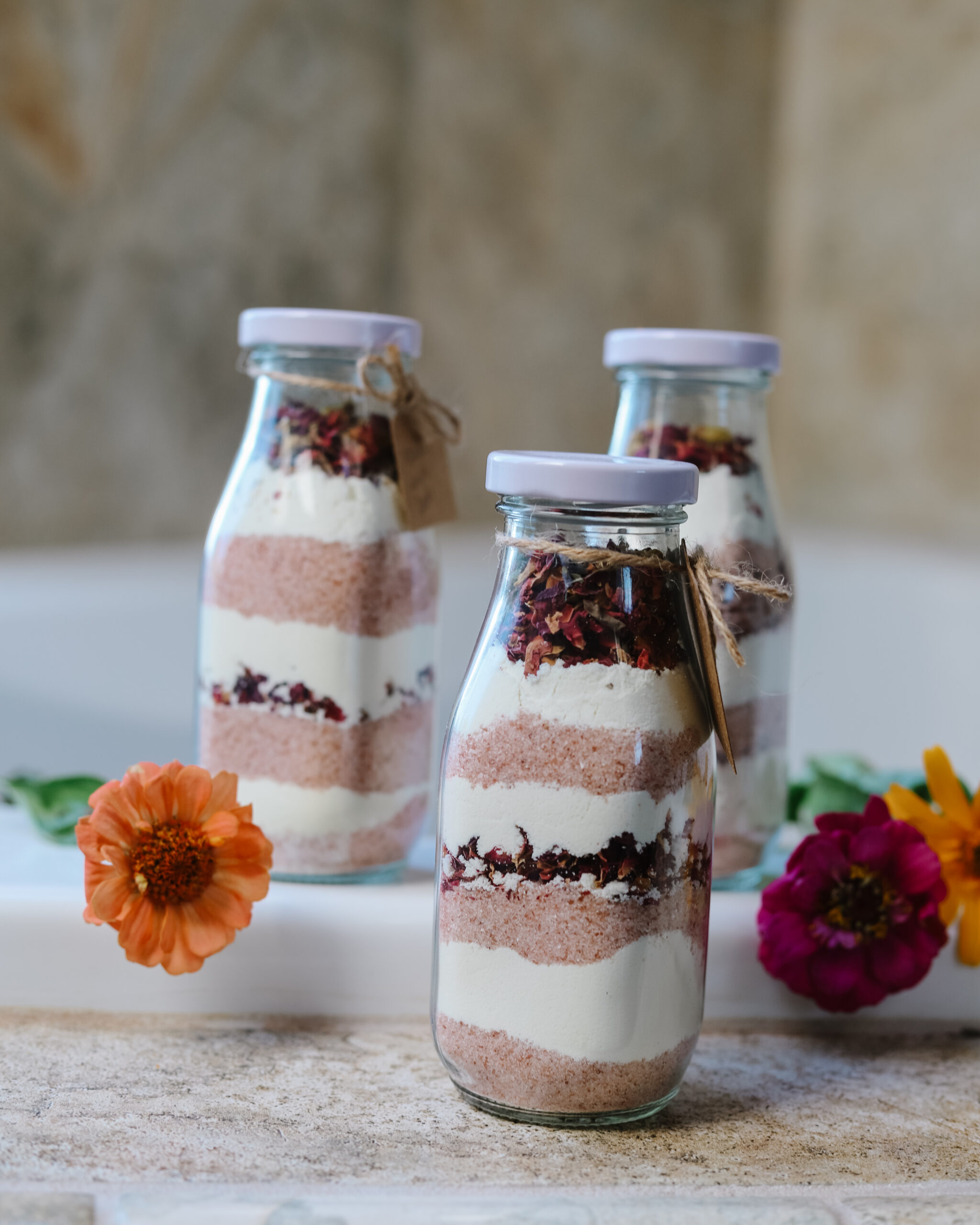
Layered Rose Milk Bath
When the weather is cold, the warmth of a bath helps ease tension stored in the body while also calming the mind. I love milk baths for dry skin as they are rich in fat and proteins which soften and soothe the skin. Milk contains natural anti-inflammatory properties, which can help to soothe irritated and itchy skin. This is particularly beneficial for those with conditions such as eczema or psoriasis, where calming the skin is essential for relief. This recipe would also work beautifully in a foot bath.
12 drops lavender To use: Add half of the mixture to a warm bath and enjoy!
3 drops rose
125g (1 cup) powdered milk
80g (1 cup) ground oatmeal
280g (1 cup) fine pink Himalayan salts
1.75g (1 cup) dried flower petals (rose, lavender and/or chamomile)
30g (1 tbsp) carrier oil of choice such as jojoba oil
Find Aroma Alchemy by Holly Brandenberger via Penguin Random House or Amazon.
